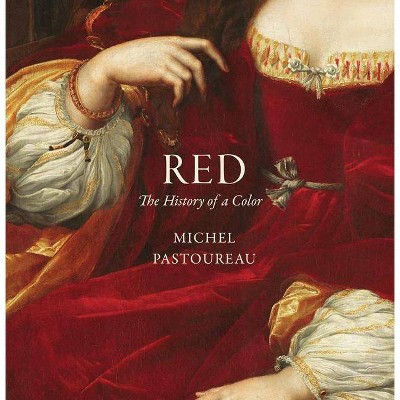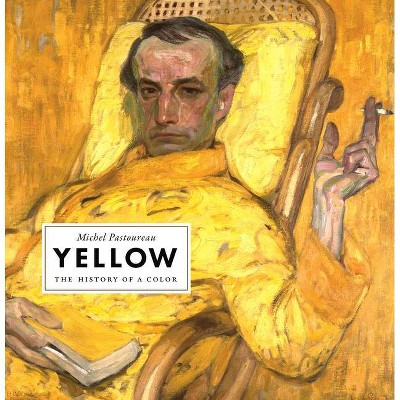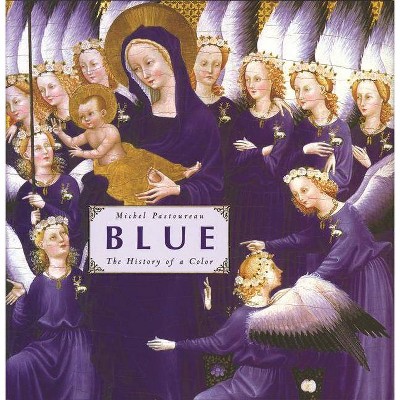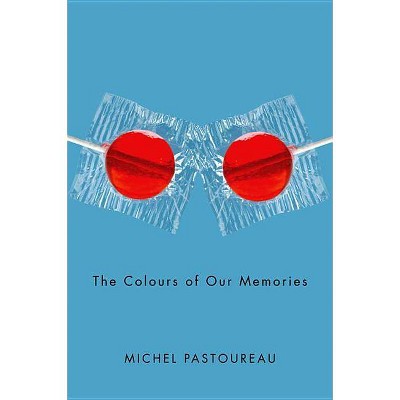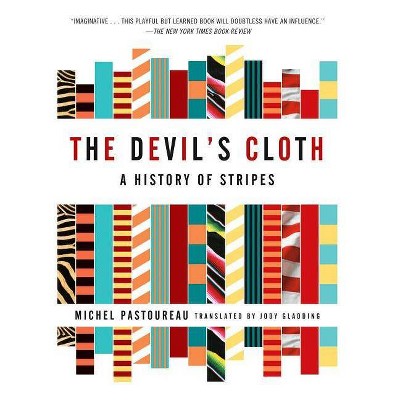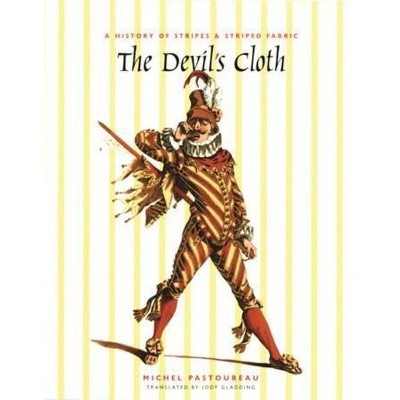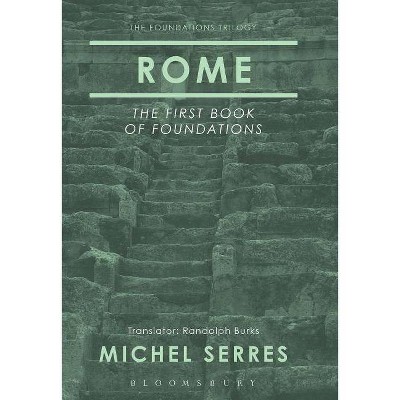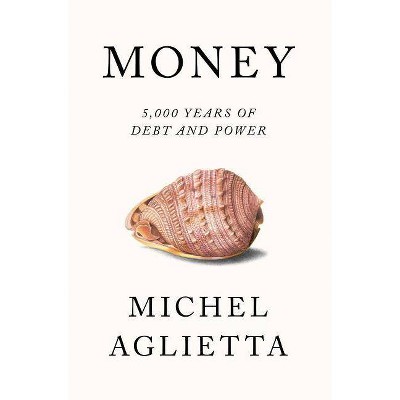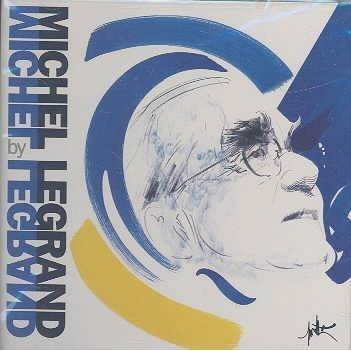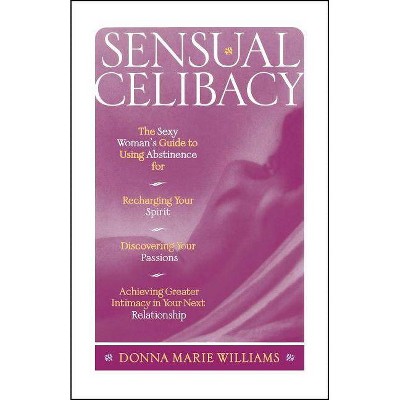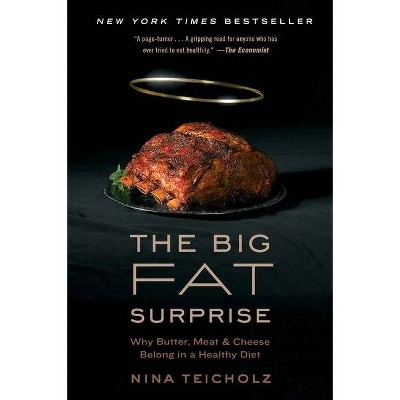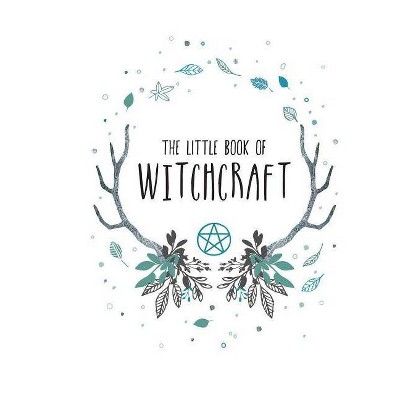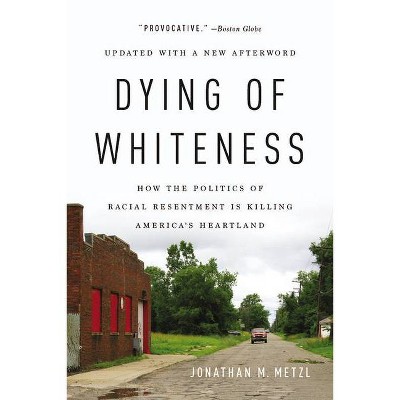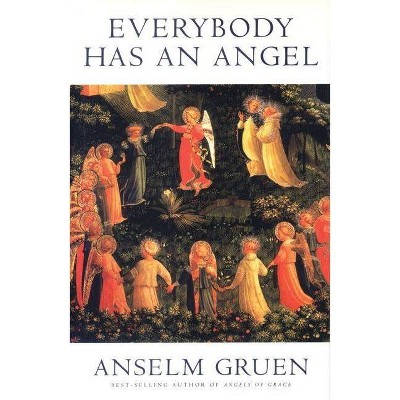Green - by Michel Pastoureau (Hardcover)
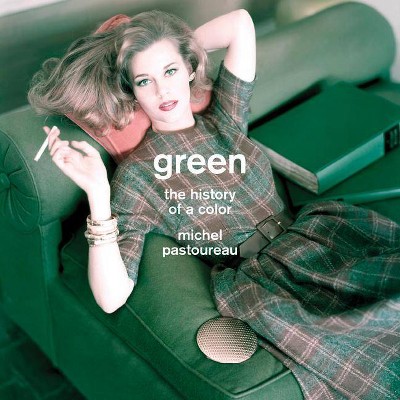
Similar Products
Products of same category from the store
AllProduct info
<p/><br></br><p><b> About the Book </b></p></br></br>"First published in French language by Editions du Seuil, Paris, under the title Vert, Histoire d'une couleur." c2013--Page facing title page.<p/><br></br><p><b> Book Synopsis </b></p></br></br><p>In this beautiful and richly illustrated book, the acclaimed author of <i>Blue</i> and <i>Black </i>presents a fascinating and revealing history of the color green in European societies from prehistoric times to today. Examining the evolving place of green in art, clothes, literature, religion, science, and everyday life, Michel Pastoureau traces how culture has profoundly changed the perception and meaning of the color over millennia--and how we misread cultural, social, and art history when we assume that colors have always signified what they do today. <p/>Filled with entertaining and enlightening anecdotes, <i>Green</i> shows that the color has been ambivalent: a symbol of life, luck, and hope, but also disorder, greed, poison, and the devil. Chemically unstable, green pigments were long difficult to produce and even harder to fix. Not surprisingly, the color has been associated with all that is changeable and fleeting: childhood, love, and money. Only in the Romantic period did green definitively become the color of nature. <p/>Pastoureau also explains why the color was connected with the Roman emperor Nero, how it became the color of Islam, why Goethe believed it was the color of the middle class, why some nineteenth-century scholars speculated that the ancient Greeks couldn't see green, and how the color was denigrated by Kandinsky and the Bauhaus. <p/>More broadly, <i>Green </i>demonstrates that the history of the color is, to a large degree, one of dramatic reversal: long absent, ignored, or rejected, green today has become a ubiquitous and soothing presence as the symbol of environmental causes and the mission to save the planet. <p/>With its striking design and compelling text, <i>Green</i> will delight anyone who is interested in history, culture, art, fashion, or media.</p><p/><br></br><p><b> From the Back Cover </b></p></br></br><p>Praise for the French edition: "Filled with surprising insights and astonishing details, and as playful and humorous as it is erudite, Michel Pastoureau's <i>Green</i> is an entertaining lesson about the way our visual perceptions are modified by culture. With carefully selected and cleverly captioned illustrations, this beautiful book will appeal to general readers as well as scholars. The writing is simple and effective, making for an easy and entertaining read."<b>--Jean-Baptiste Evette, prize-winning French novelist and translator</b></p><p>Praise for the French edition: "This book is a rare fusion of accessible, entertaining writing and rich humanistic learning. Much of the argument is made through historical anecdotes, and Pastoureau has a knack for finding stories that are both instructive and interesting. <i>Green</i> should appeal to historians, art historians, and other scholars in the humanities, as well as to a broad general audience."<b>--David O'Brien, University of Illinois, Urbana-Champaign</b></p><p/><br></br><p><b> Review Quotes </b></p></br></br><br>[A] splendid work, vastly informative and beautifully produced. . . . I once toyed with the idea of writing a book on the theme myself and must confess that Pastoureau's book is immeasurably superior to the one I had planned. If only there were a color that signified envy.<b>---Kevin Jackson, <i>Literary Review</i></b><br><br>[C]omprehensive and lavishly illustrated.<b>----Natalie Angier, <i>New York Times</i></b><br><br>[Pastoureau's] pleasantly rambling illustrated narrative charts the changing place of green in Western thought, art and life, from prehistory to the present day.<b>---Caroline Bugler, <i>World of Interiors</i></b><br><br>[S]prightly. . . . <i>Green</i> is a dash through domains and contexts as varied yet related as optics, clothing manufacture, vexillology, literature, color lexicons, and the history of painting. . . . The point, Pastoureau emphasizes, is that green is, among the colors, exquisitely unstable--both in color theory and in real-life manufacture. . . . Pastoureau is fascinating in describing the long decline of green in the period just before the Age of Revolution.<b>---Eric Banks, <i>Chronicle Review</i></b><br><br>[S]umptuously illustrated. . . . These are books to look at, but they are also books to read. . . . Individual colors find their being only in relation to each other, and their cultural force depends on the particular instance of their use. They have no separate life or essential meaning. They have been made to mean, and in these volumes that human endeavor has found its historian.<b>---Michael Gorra, <i>New York Review of Books</i></b><br><br>As this beautifully illustrated work shows, the 'uneasiness' of being green is what makes its story so interesting.<b>---Fiona Capp, <i>Sydney Morning Herald</i></b><br><br>From the ample green gown in Jan van Eyck's painting The Arnolfini Wedding to the chartreuse and shamrock in Paolo Veronese's work, from Paul Cezanne's apples to Kees van Dongen's Fauvist use of mint and jungle greens, there's much to sink your eyes into.<b>---Mary Louise Schumacher, <i>Milwaukee Journal Sentinel</i></b><br><br>In <i>Green: The History of a Color</i>, Michel Pastoureau shows all of the possibilities in just one band of the spectrum. . . . Pastoureau's approach is elegant and revelatory. . . . <i>Green</i>'s text is choreographed with accompanying artwork to produce a skillfully designed embarrassment of riches. Clearly, one or two sumptuary laws are being violated. John Calvin is rotating in his grave with enough energy to create prop wash. The paper has heft but not weight. The cover reminds us that we are in a High Age of dust jacket design (the hard cover underneath is no poor relative, either). Text, art, design, materials: a book's book. Open it on plane or train and catch the envious spark--green, of course--in your neighbor's eye.<b>---Peter Lewis, <i>Barnes and Noble Review</i></b><br><br>Matching historical detail to artistic and cultural works of art, Pastoureau demonstrates that green richly deserves its place in both the bygone and the contemporary palette.<b>---Lara Killian, <i>PopMatters</i></b><br><br>One of The Globe and Mail 75 Book Ideas for Christmas 2014<br><br>One of The Guardian's Best Books of 2014<br><br>One of TheAustralian.com's In the Good Books 2014<br><br>Pastoureau's lifetime of research and consideration provide the strong historical and theoretical basis of this excellent study. It is fascinating to recognize that something as seemingly constant as a color is constantly changing, both in actual fact and in how we interpret it. For anyone interested in becoming more familiar with the colors that beautify and enrich our lives, or for anyone interested in thumbing through a richly illustrated, fantastically intelligent book, <i>Green: The History of a Color</i>, is intensely rewarding.<b>---Stephan Delbos, <i>Body</i></b><br><br>Praise for the French edition: A beautiful book that opens the windows wide.<b>---Marie Chaudey, <i>La Vie</i></b><br><br>Praise for the French edition: A beautiful presentation of a long-unloved color.<b>---Daphné Bétard, <i>Beaux-Arts</i></b><br><br>Taken together, the earlier volumes on blue<i> </i>(2001), black<i> </i>(2009), green<i> </i>(2013) and red (2017), plus the new book, [<i>Yellow</i>, ] represent 'an edifice' that [Michel Pastoureau] has been working to build for half a century: a history of colours in (for the most part) Europe from the ancient Greeks and Romans to the 18th century and beyond. . . . [The books] amount to an ambitious project deserving not merely respect but even a touch of awe. There are very few comparable enterprises.<b>---Kevin Jackson, <i>Literary Review</i></b><br><br>[C]easelessly fascinating and erudite.<b>---Michael Glover, <i>Independent</i></b><br><br>A charming study, filled with numerous photos and illustrations. This book will be of great interest to those fascinated by history, culture, and design.-- "Library Journal"<br><br>Beautifully illustrated.-- "Daily Mail"<br><br>It ain't easy being . . . a book about the colour green. Pastoureau shows us what green has signified at various points in various cultures, and the book illuminates the journey with its bright design.-- "Globe and Mail"<br><br>Michel Pastoureau's <i>Green: The History of a Color</i> is an interesting look at how this sometimes forgotten hue has been perceived in art, fashion, and culture. Beautiful art and a thorough historical survey make this book an irresistible read.-- "Traditional Home"<br><br>Pastoureau's engaging cultural history of the color green tackles art history and color theory. . . . With the look and feel of an artbook, this book holds equal amounts of substance of in the text. . . . His anecdotes are insightful, the references occasionally delightfully esoteric. . . . [H]e gives this substantial discussion further contemporary relevance.-- "Publishers Weekly"<br><br>Taking great care not to project present-day definitions, classifications, and conceptions of color onto the past, he follows green's history from early negative associations and its notoriously fugitive pigments to its evolved status as the color of money, fecundity, nature, and environmental concerns. . . . As a companion volume to the author's previous titles, <i>Blue</i> and <i>Black</i>, or as a stand-alone work, this highly anecdotal and beautifully written book belongs in the collection of every library.-- "Choice"<br><br>We absolutely loved this book and we didn't merely read it, we read it twice. . . . Colors are not just colors: they have a history and we can't imagine it ever being superseded by anything more than what Michel Pastoureau has accomplished in his monumental work, <i>Green</i>. Designers of all ilks everywhere need to read this book, and the prior colors (<i>Blue</i> and <i>Black</i>) and future colors he comes out with as well. The thought process, planning and impeccable research that must have gone into this book is prodigious. . . . [T]hough Kermit said it's not easy being green, reading this book is an easy decision! . . . This is a hefty tome that lends credence to the academic side of fashion theory. . . . Pastoureau has provided us with a tour de force erudite approach to color. . . . [P]ut it on your Christmas gift list for anyone in the fashion or art world. It's a must to own, and so much fun as a read. Academically speaking, it's popular culture at its best. . . . <i>Green</i> is highly recommended by Whom You Know!-- "Whom You Know"<br><p/><br></br><p><b> About the Author </b></p></br></br><b>Michel Pastoureau</b> is a historian and director of studies at the École Pratique des Hautes Études de la Sorbonne in Paris. A specialist in the history of colors, symbols, and heraldry, he is the author of many books, including <i>Blue</i> and <i>Black</i> (both Princeton) and <i>The Devil's Cloth: A History of Stripes</i>. His books have been translated into more than thirty languages.
Price History
Cheapest price in the interval: 25.99 on November 8, 2021
Most expensive price in the interval: 28.99 on October 22, 2021
Price Archive shows prices from various stores, lets you see history and find the cheapest. There is no actual sale on the website. For all support, inquiry and suggestion messagescommunication@pricearchive.us
